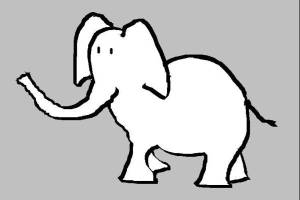I watched a telly programme last night, 'Riddle of the Chinese Miracle Mummy', about the 2000 year old mummy of Chinese noblewoman, Xin Zhui, from the Han Dynasty. She had a fused disc in her back and was, perhaps as a consequence, very fat, with constricted arteries.
The very well preserved body was discovered during the Cultural Revolution in Changsha. It had been wrapped in 20 layers of silk and then sealed in multiple coffins, buried at the bottom of a very cold pit surrounded with charcoal and clay and then covered by a big mound of earth. It was assumed that decay was halted by a combination of the coldness and the fact that no air could get to the body (so the micro-organisms responsible for decomposition couldn't breathe); there was a whole bit about water getting into the coffin by osmosis and what effect this had, but I didn't really follow it.
The internal organs were intact, she had undigested melon seeds in her stomach and she had gallstones; they speculated that towards the end of her final meal a gallstone had obstructed the entrance to the bowel and her already weak heart gave up. They made a big fuss about this as heart-disease has been seen as very much a disease of fat modern western folk.
They also showed them dissecting body of a man from the same period and pulling out all the tapeworms from his intestines.
Whilst looking on the internet for more information I found this site dedicated to mummies, which is mildly diverting but didn't have anything about the Chinese mummy. There is a China Daily article which appears to be about a different film on the same subject but which has a nice picture; they refer to her as Lady Dai.
The very well preserved body was discovered during the Cultural Revolution in Changsha. It had been wrapped in 20 layers of silk and then sealed in multiple coffins, buried at the bottom of a very cold pit surrounded with charcoal and clay and then covered by a big mound of earth. It was assumed that decay was halted by a combination of the coldness and the fact that no air could get to the body (so the micro-organisms responsible for decomposition couldn't breathe); there was a whole bit about water getting into the coffin by osmosis and what effect this had, but I didn't really follow it.
The internal organs were intact, she had undigested melon seeds in her stomach and she had gallstones; they speculated that towards the end of her final meal a gallstone had obstructed the entrance to the bowel and her already weak heart gave up. They made a big fuss about this as heart-disease has been seen as very much a disease of fat modern western folk.
They also showed them dissecting body of a man from the same period and pulling out all the tapeworms from his intestines.
Whilst looking on the internet for more information I found this site dedicated to mummies, which is mildly diverting but didn't have anything about the Chinese mummy. There is a China Daily article which appears to be about a different film on the same subject but which has a nice picture; they refer to her as Lady Dai.

No comments:
Post a Comment